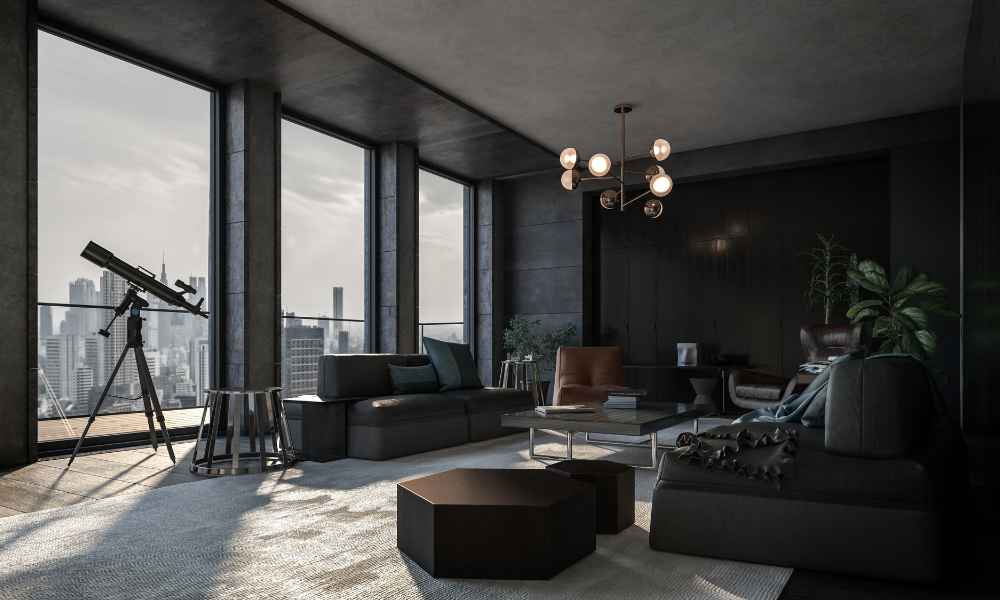We think of coastal living rooms, images of light, airy spaces adorned with soft hues and natural textures typically come to mind. However, integrating dark furniture into a coastal-themed living room can offer a surprising and sophisticated twist to the traditional aesthetic. This approach not only enhances the room’s character but also introduces an element of luxury and depth. In this exploration, we will delve into how dark furniture can be harmoniously blended with coastal elements to create a unique and inviting space.
Understanding Coastal Style
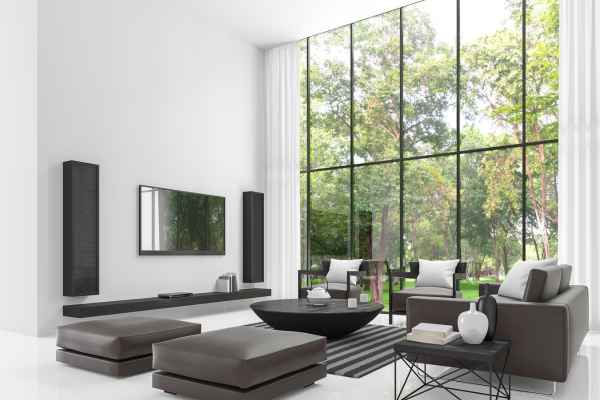
Coastal style is deeply inspired by the relaxed, carefree vibe of seaside living. It emphasizes light, bright spaces that echo the simplicity and beauty of the beach. Key elements of decor include pale color palettes, such as whites, creams, and soft blues and greens, which mimic the colors of the sand, sea, and sky. Textures also play a crucial role, with a focus on natural fibers like linen, jute, and rattan. The goal is to create a clean, calming environment that reflects the tranquility of coastal landscapes.
Why Choose Dark Furniture?
While light furniture is a staple of coastal design, choosing dark furnitures can add an unexpected layer of sophistication and modernity. Dark furnitures pieces like deep blue sofas, ebony coffee tables, or rich, wooden accents can serve as focal points in the room, grounding the airy feel of interiors and adding a robust contrast that highlights other elements. Additionally, dark furniture is often more forgiving with wear and tear, making it a practical choice for busy households. By choosing furnitures, you can achieve a perfect balance between coastal lightness and a dramatic, contemporary look that makes your living space stand out.
Planning Your Coastal Living Room
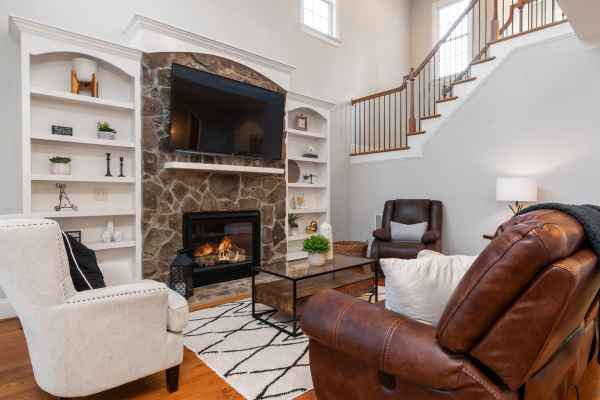
Creating a living room with furniture requires thoughtful planning to ensure that the space remains inviting and balanced. Effective space planning involves considering the flow and function of the room. Furniture should be arranged to maximize natural light and showcase views, whether they are of the ocean or your garden. The layout should facilitate easy conversation and comfort, making the living room a central, welcoming space for relaxation and socializing.
Space Planning
Incorporating dark furniture in a living room demands careful consideration of spacing and positioning. To prevent the space from feeling cramped or claustrophobic, it’s crucial to allow for ample walking space and ensure that each piece of furniture can ‘breathe’ with enough room around it. Strategic placement of larger, darker pieces can help in creating a balanced look without overwhelming the lighter coastal elements.
Color Schemes
The choice of color scheme in a living room with furniture is pivotal in maintaining the essence of coastal style. Opt for light walls and floors to create a crisp backdrop that contrasts beautifully with the furnitures. Incorporate splashes of sea blues, sandy beiges, and soft grays through accessories and textiles to enhance the coastal feel while keeping the space airy and bright.
Selecting the Right Furniture
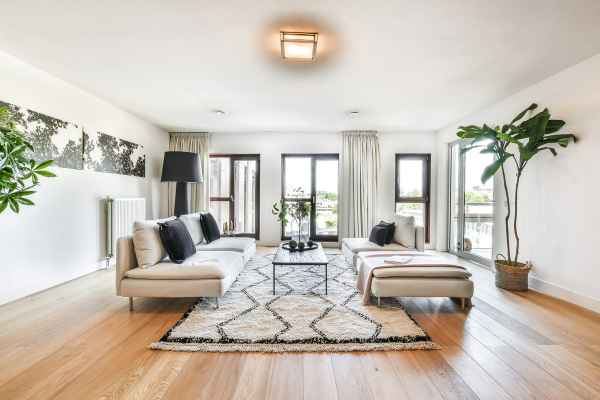
Choosing the right furniture is key to successfully styling a living room with furniture. The furniture should not only complement the pieces but also reinforce the coastal theme without overshadowing it.
Sofas and Seating
Select sofas and seating that offer comfort and durability in materials that can stand up to the theme. Opt for upholstered pieces in dark navy or charcoal grey to anchor the space, while adding lighter colored throw pillows or blankets to blend with the coastal elements. This contrast will draw the eye and create a focal point in the room.
Coffee Tables and Side Tables
Selecting coffee tables and side tables, consider materials like dark-stained wood or even wrought iron to contrast with lighter elements in the room. Choose designs that are airy and open to avoid making the space feel too heavy. These pieces can serve as functional yet stylish components that complement both the furnitures and the coastal vibe.
Accentuating with Textiles
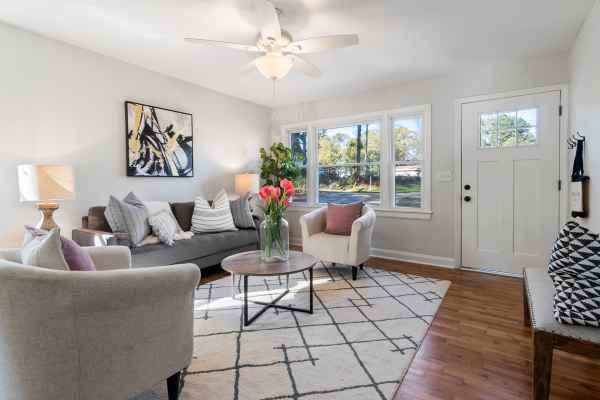
Textiles play a significant role in tying together the look of a living room, especially when using dark furniture.
Curtains and Drapes
Opt for curtains and drapes in light, breezy materials to soften the appearance of furniture. Sheer or semi-sheer fabrics in pale colors allow light to permeate the space, enhancing the open, airy feel of coastal decor. These textiles can also add a layer of texture and visual interest to the room.
Rugs and Throws
Area rugs and throws are excellent for adding warmth and color to balance the furnitures. Choose rugs with coastal patterns or in colors that reflect the seaside palette. Throws can be draped over sofas and chairs to bring in lighter hues and add a cozy, lived-in feel to the room. These elements help to harmonize the darker furniture with the overall light and breezy coastal theme.
Lighting the Room
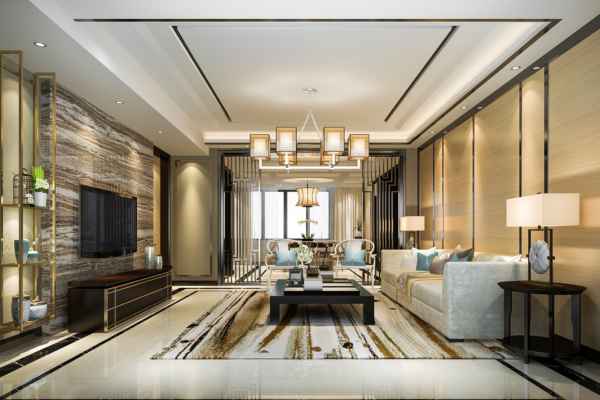
Proper lighting is essential in any living room but becomes particularly crucial when incorporating furnitures into a coastal setting. To prevent the room from feeling too dark or heavy, incorporate layers of lighting. Start with ample natural light wherever possible and complement this with a mix of overhead lighting, floor lamps, and table lamps. These should be strategically placed to illuminate dark corners and highlight key features of the room. Opt for light fixtures in natural materials like glass, or with a metallic finish to reflect light and enhance the coastal vibe.
Decorative Elements
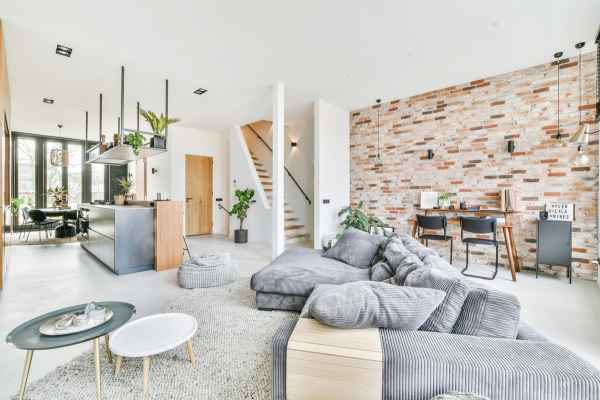
Decorative elements are vital in tying together the theme of a coastal living room with dark furniture. These elements should reflect the textures and colors of the coast while balancing the dominance of furnitures. Use decor to introduce softer tones and textures, reinforcing the light and airy feel of coastal design.
Wall Decor
Wall decor in a living room with furniture should serve to lighten and enliven the space. Consider artworks that feature marine landscapes, beach scenes, or abstract pieces in cool blues, greens, and sandy tones. Mirrors can also be a strategic addition, reflecting light and visually expanding the space. Choose frames in lighter tones or distressed wood to maintain the coastal aesthetic.
Decorative Accents
Incorporating decorative accents such as vases, bowls, and sculptures in materials like ceramic, glass, or weathered wood can enhance the coastal feel. Place these items strategically around the room to complement the dark furniture without overwhelming the space. Accents in sea glass, coral, or shells can also add authentic coastal touches that brighten dark furnitures arrangements.
Maintaining Balance
Maintaining balance in a living room with dark furniture is key to achieving a harmonious design. This involves careful distribution of color, texture, and visual weight. Use lighter colored textiles, rugs, and large pieces of art to balance the visual heaviness of furnitures. Ensure that the placement of furniture and decor creates an inviting flow that encourages ease of movement and interaction, while still capturing the essence of coastal calm. This balance of elements will create a cohesive space that feels both anchored and expansive.
Final Touches
Final touches in a coastal living room with furnitures are what truly bring the space to life, making it feel personal and inviting. Consider incorporating elements like indoor plants or fresh flowers to add a natural, vibrant touch that contrasts with the furniture. Additionally, personal items such as photo frames, collections of seashells, or even books can create a lived-in feel. Soft furnishings like plush cushions and lightweight throws in coastal colors can soften the appearance of the dark furnitures and enhance the overall comfort of the room.
Can Dark Furniture Work in a Small Coastal Living Room?
Yes, dark furniture can definitely work in a small living room if managed correctly. The key is to balance the dark pieces with light and neutral elements to avoid overwhelming the space. Use light-colored walls, curtains, and rugs to create a sense of space and openness. Opt for dark furniture with clean, simple lines and avoid bulky items that consume too much visual space. Reflective surfaces like glass or mirrored tables can also help bounce light around the room, making it appear larger and brighter.
How Do I Prevent Dark Furniture from Making the Room Feel Too Heavy?
Preventing dark furniture from dominating the room involves strategic use of color and light. Incorporate plenty of light shades in your decor, such as whites, creams, and pastels, to counterbalance the heaviness of dark furnitures. Use bright and airy textiles for your window treatments, cushions, and throws to keep the space feeling light. Lighting also plays a crucial role; ensure there is a mix of ambient, task, and accent lighting to enhance the room’s overall brightness and create visual balance.
What Types of Wood are Best for Dark Coastal Furniture?
The best types of wood for dark coastal furniture are those that offer durability and a rich color that can anchor the lighter elements of coastal design. Woods like walnut, mahogany, and dark-stained oak provide deep, luxurious tones that can contrast beautifully with a light coastal palette. These woods can be finished with a matte or satin finish to keep the look understated and elegant. Opting for pieces that incorporate lighter colored accents or hardware can also help integrate these darker woods into the coastal theme more seamlessly.
How Can I Brighten a Coastal Living Room with Dark Furniture?
Brightening a living room with furnitures involves a strategic approach to color, light, and decorative accents. First, maximize the natural light by keeping windows unobstructed or using light, sheer curtains that allow sunlight to permeate the space. Adding mirrors strategically across from windows can also amplify light and give the room a more open feel. Consider light-colored walls, ceilings, and floors to create a stark contrast with the dark furnitures, enhancing the sense of space. Incorporating vibrant accessories like colorful throw pillows, light rugs, and bright artwork can also add lively touches that offset the darker tones of the furniture.
Are There Any Colors I Should Avoid in a Coastal Living Room with Dark Furniture?
In a coastal living room with furniture, it’s generally wise to avoid overly dark or saturated wall colors that can make the space feel smaller and more enclosed. Dark greens, deep blues, and heavy browns should be used sparingly, primarily as accent colors rather than primary color schemes. These tones can make the room feel denser when combined with dark furniture. Instead, focus on lighter and neutral shades that can help maintain an airy, open feel characteristic of coastal decor.
Conclusion
Incorporating dark furniture into a coastal living room can create a sophisticated and impactful design statement. By carefully planning your space layout, choosing the right color schemes, and strategically using decor and lighting, dark furnitures can complement rather than overwhelm the coastal theme. Remember, the key is to balance the dark tones with lighter elements, such as pale textiles, reflective accessories, and ample lighting, to ensure the space remains breezy and welcoming. With these considerations in mind, your living room with furnitures will not only look stylish but will also maintain the serene and inviting atmosphere that is quintessential to coastal living.
